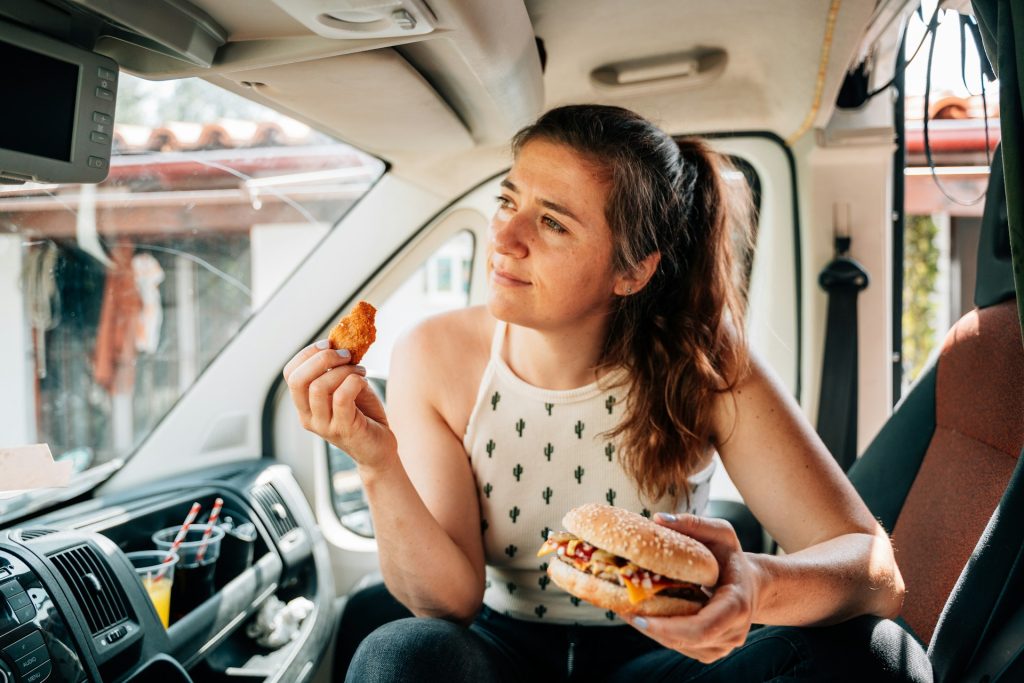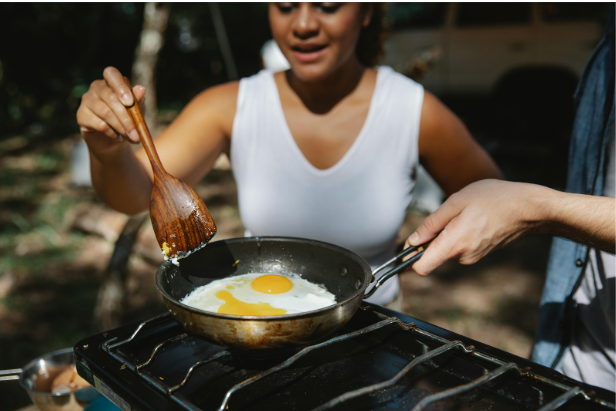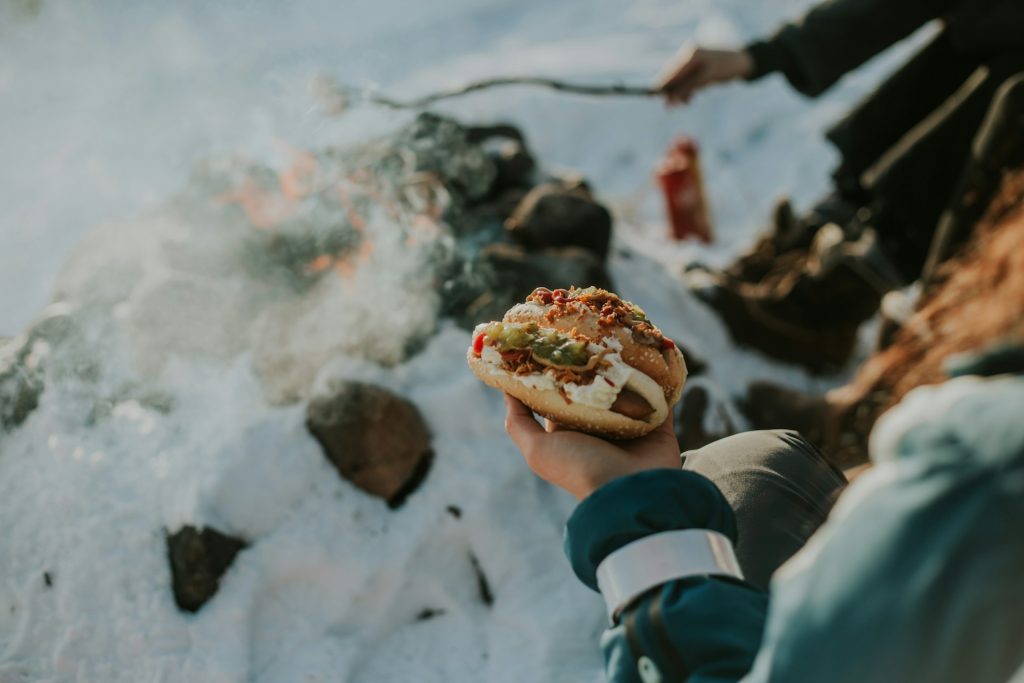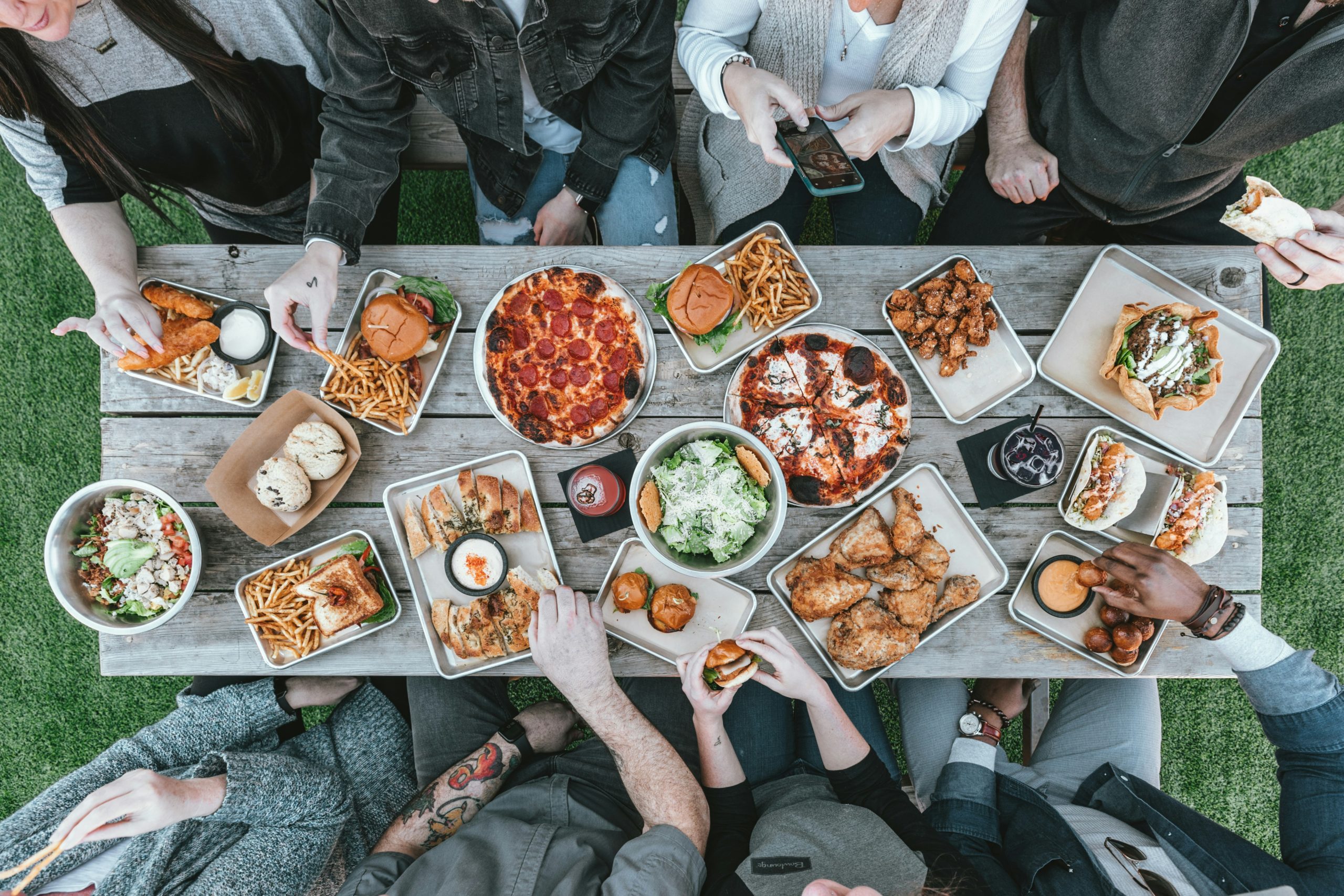Table of Contents
Keeping hot meals hot during travel enhances flavor and ensures food safety. Using thermal bags and stainless-steel containers can help retain heat, ensuring food stays hot. Heat packs offer a simple solution for those who prefer DIY methods.
For longer trips, electric blankets can double as a heat source, while insulated food delivery bags maintain safe temperatures. Pack hot and cold items separately to prevent heat loss.
Consider these tips to keep your hot dishes enjoyable. Maintain a consistent temperature to prevent bacteria growth and ensure your meals are as delightful as when first prepared.
Importance of Maintaining Hot Food on the Go
Keeping hot meals at the desired temperature while traveling is crucial for taste and health. When transporting hot food, having the right equipment is essential. Insulated trays and carriers designed to retain heat ensure that your food arrives as intended without the risk of bacteria thriving in the ‘danger zone.’
Separating hot and cold items is vital to prevent thermal interference. Using glass instead of plastic containers for hot meals can help maintain heat, making it a good choice for keeping food hot on the move.
Benefits of Eating Warm Meals

Hot dishes offer comfort and satisfaction and aid digestion by breaking down complex molecules for better nutrient absorption. Wrapping food in materials that retain heat, like foil, can prolong the enjoyment of your meal when you’re away from home.
Indulging in a hot dish on the road or at a picnic can bring a sense of home-cooked goodness to your travels. You can turn a simple eating experience into a memorable dining adventure, no matter where you are, by using the right methods to keep meals warm.
Reducing Health Risks With Proper Food Temperature
One key aspect of food safety is maintaining proper temperatures. Keeping meals at a safe temperature greatly reduces the risk of bacteria growth. Consuming food kept too long at an unsafe temperature can lead to foodborne illnesses. Ensuring hot dishes remain warm is a matter of enjoyment and health.
Warm food lasts longer when traveling, preventing spoilage and bacterial growth.
Innovative Solutions for Keeping Food Warm
Food storage and transportation innovations have made it easier to keep dishes at the right temperature for longer periods. There are different options depending on your needs and how long you’re traveling, from stainless steel containers to electric lunch boxes. These solutions are convenient and reliable, ensuring that your hot dish arrives as tasty as when it left the kitchen.
Insulated Containers and How Long They Stay Warm
Stainless steel insulated containers are ideal for extended heat retention. They keep hot dishes warm, making them perfect for transporting meals like soups and casseroles. The double-walled insulation ensures your pizza stays hot and ready to eat upon delivery.
Thermos flasks keep liquids hot or cold for over four hours thanks to vacuum insulation technology. It’s great for carrying and enjoying a hot dish hours later. Whether it’s soup, stew, or a hot beverage, a thermos flask is essential for enjoying a warm meal on the move.
An insulated bag helps keep food warm for about an hour on shorter trips. Lined with thermal material, it retains heat, allowing you to enjoy a warm meal away from home. While they don’t retain heat as long as Thermos containers, they are lightweight and portable, making them practical for daily use.
Electric Warming for Long Journeys
Electric warming methods offer a reliable way to heat food for long journeys. An electric warming tray provides consistent temperature control, keeping your meal warm throughout the trip. This is especially beneficial when traditional heating sources are limited.
Portable food warmers keep meals warm for over three hours. They come with an electric lunch box feature, allowing you to plug them in and enjoy a hot meal anywhere. They are ideal for long car trips, outdoor events, or any situation without conventional heating options.
The electric lunch box is a compact and efficient solution for heating meals on the go. It warms food evenly with the push of a button. Its portability makes it perfect for travelers, office workers, and students who want a warm meal without a microwave or stove.
DIY Heat Preservation
DIY heat packs can be an effective and budget-friendly option for maintaining meal temperature without high-tech gadgets. Made with materials like uncooked rice and a cloth bag, they offer a practical homemade solution for food warmth.
Using Household Items for Insulation
Household items can keep your meals warm during transit. Kitchen towels provide insulation and a layer of heat retention to prolong the warmth of your food.
Aluminum foil and kitchen towels can effectively retain heat. Wrap your food in foil and insulate it with towels to create a makeshift thermal barrier. This method is useful for short trips or keeping your meal warm until eating.
In situations without traditional warming equipment, wrapping your food in warm clothing can be an innovative and effective solution. Clothing, especially wool or fleece, can act as an insulating layer, trapping the heat and keeping your meal warm for a time.
The Role of Heat Sources in Food Transportation
Heat packs keep meals warm during transportation by generating a consistent heat source. However, it’s crucial to monitor their warmth because once they lose heat, they should be removed immediately to prevent them from drawing warmth away from the food.
Hot water bottles and heated bricks are old-fashioned methods that can still be effective for temporary heat retention. Thermal bags can encase these items, creating a makeshift warmer for food and maintaining a meal’s temperature during quick trips.
Electric blankets and heated seat covers offer dual-purpose warmth, serving comfort and functionality. They keep food warm when transporting, utilizing the car’s power to provide a steady source of heat. A dish under an electric blanket can stay heated throughout the journey, making it convenient for travelers.

Non-electric Travel Warmers
When electricity isn’t available, travelers can keep their food warm using non-electric alternatives. Portable gas stoves provide a practical solution for reheating meals. Food can be warmed in a pot over the flame, easily adjusted for the required temperature, keeping the meal hot until it’s time to eat.
Natural Food Insulation
Maintaining the warmth of food maintains health and taste. Natural insulation methods can preserve heat effectively, keeping it safe from contamination and ensuring it remains palatable and nutrient-rich during travel.
Preheated Oven Method – Short-Term Heat Preservation
The preheated oven method is a simple technique for short-term heat preservation. By heating an oven to a high temperature and then turning it off, a warm environment is created for keeping food hot. This method is useful for transporting freshly cooked dishes.
Note that the oven will gradually cool, so this method is best for travel times that align with the diminishing warmth. Time management is key to ensuring the food stays hot, as the residual heat will taper off.
Towel Wrap Technique – Simple and Effective
Wrapping food in kitchen towels retains heat. For example, you can wrap a casserole dish in towels and secure it with rubber bands. The towels act as insulators, trapping heat and reducing heat loss.
This method is beneficial for foods that require lower heat retention without continued cooking. Rubber bands ensure the towels remain snug against the dish, preventing unwrapping and heat escape during transportation. It’s an easy, cost-effective solution for travelers.
Combining Food with Heat-Retaining Strategies
Combining food with heat-retaining strategies can prolong warmth. Heat packs can be placed around food containers to create an insulated environment. This method can be adapted to different food and containers, ensuring meals stay warm throughout the journey.
Slow Cooker Transport Bags – Keep Food Warm While Traveling
Slow cooker transport bags keep meals hot for extended periods, ideal for transporting hot food. Their insulation maintains a steady temperature, ensuring dishes like stews and soups remain at a safe temperature upon arrival.
These bags are convenient for potlucks or family gatherings where you need to travel with a prepared meal. They also protect the slow cooker from damage during transit, adding an extra layer of usefulness to this method of food transportation.
Styrofoam Coolers for Heat Maintenance
Typically used to keep items cold, Styrofoam coolers can also be repurposed to keep food hot. The insulating properties of Styrofoam make it suitable for maintaining either hot or cold temperatures. When used with hot food, the cooler should be lined with kitchen towels to absorb condensation and prevent heat loss.
This method is particularly effective for baked goods that need to stay warm without getting soggy. The cooler’s tight seal prevents heat from escaping, while the kitchen towels provide an extra barrier against the cold, maintaining the desired temperature for longer.
Food Warmth While Traveling
Keeping food warm during travel requires an understanding of various methods and their time limits. Each method has a specific duration for effectively retaining heat, which is essential to know when planning how to keep meals hot while traveling. By considering these factors, you can choose the most suitable approach to enjoy warm, satisfying meals on the go.
For example, insulated containers can maintain food temperature for an extended period, but they have limits. Assessing travel time and resources is essential to keep food warm until it reaches its destination.
Maximizing Food Heat in Transit
Strategic planning is helpful for maximizing the duration of food heat while in transit. Using high-quality insulated containers and preheating them can greatly extend the time food stays warm, providing a practical solution for longer journeys.
Understanding Limitations
Every heat preservation method has limitations, and recognizing these is critical for maintaining food temperature. Insulated containers are effective but can’t maintain heat indefinitely. Factors like the initial food temperature, outside weather conditions, and insulation quality play a role in how long food stays warm.
Choosing the right heat retention method for your travels requires considering various factors and understanding the method’s limits. It’s essential to have realistic expectations and be prepared to make adjustments if needed during travel. Having a backup plan, such as access to a microwave or stove for reheating, is wise in case the journey exceeds the chosen method’s effectiveness.
Best Practices for Extended Travel
For extended travel, follow best practices to keep food warm, including pre-warming insulated containers, tightly sealing lids, and avoiding frequent openings that cause significant heat loss. Combining heat packs with insulated bags can improve heat retention.
For long trips, opt for foods that retain heat well and remain appetizing even after extended periods of warming. Excellent choices include stews, casseroles, and grains, which are known to maintain their quality over time. These dishes are ideal for keeping you satisfied during lengthy journeys.
Practical Tips to Warm Up Your Food

To keep food warm during transportation, employ microwave-safe dishes and strategic packing techniques. For example, using a cardboard box with handles ensures easy carrying, and placing a towel at the bottom serves as padding and absorbs spills, maintaining cleanliness and heat.
Using a cooler for transporting hot food is also effective, as its insulation properties help maintain heat. For added heat retention, especially for baked goods, wrapping the food in aluminum foil and then in towels can create additional insulation layers, extending the period the food stays warm.
Preventing Heat Escape During Transit
To keep food warm while traveling, it’s crucial to minimize heat loss. This can be achieved by using insulated containers and hot packs. When placed next to the food, these packs enhance heat retention, resulting in warmer food for longer periods.
Another tip: limit the opening and closing of food containers. Each time a container is opened, heat escapes, lowering the food’s temperature. Therefore, packing everything securely and only opening it when necessary can help maintain a consistent temperature.
Strategic Packing: Separating Hot and Cold Foods
Separating hot and cold items is essential for maintaining their respective temperatures when transporting food. A container filled with hot food can transfer heat to nearby cold items, leading to rapid cooling of the hot food and potential warming of the cold items. Packing hot and cold foods in separate containers prevents these issues, maintains desired temperatures, and reduces the risk of foodborne illnesses.
Keeping hot and cold foods separate prevents them from reaching room temperature, where bacteria can flourish. Foods should be packaged in separate insulated bags to maintain their temperatures. Using one bag for hot foods and another for cold items minimizes the risk of heat from the warmer container, affecting the shelf life and quality of the cold items.
Keeping Food Hot While Traveling: The Wrap-up
Insulated containers are crucial for retaining heat and keeping food warm during travel. Ensure the lid is securely closed to optimize its performance. Whether you’re using a thermos, insulated lunch bag, or electric warmer, the key is to minimize heat loss by maintaining a tight seal, allowing you to enjoy warm meals while on the move.
To prepare food for travel, start with a hot meal in a pan and verify its temperature using an oven thermometer before packing. This step is crucial for maintaining optimal warmth. Additionally, strategic packing is essential; keep hot and cold foods separate to prevent heat transfer and ensure your meal stays warm throughout your journey.
Understand the capabilities of each method and employ best practices to extend the enjoyment of a warm meal while traveling. By using the right containers and packing strategies, you can savor delicious, hot meals even while on the go.




